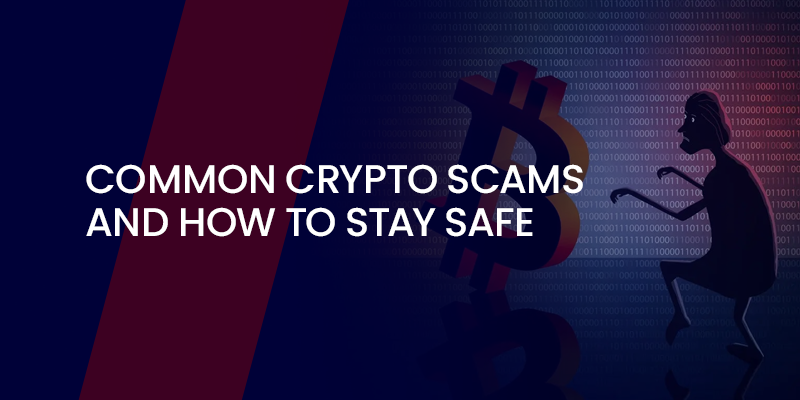Bitcoin and other cryptocurrencies have changed the game for money and investing. With Bitcoin hitting fresh peaks in 2025, loads of people are jumping in, hoping for big wins. But all that excitement brings out the scammers. They have raked in billions, with people losing over $5.6 billion last year from these schemes. From bitcoin scams that dangle fast cash to sneaky blockchain scams using fancy tech, knowing the dangers matters if you’re getting involved. This blog covers the usual scams and how to spot a Bitcoin scammer.
What Crypto Scam Really Looks Like
Crypto fraud means any trick where someone steals your coins, info, or cash by pretending it’s a real crypto deal. The blockchain’s setup is spread out and hard to track, making it harder to undo that bank stuff. Scammers play on the buzz around Bitcoin and lesser-known coins, hitting up social sites, phony pages, and even smart bots to seem trustworthy.
Reports show investment traps top the list for complaints, pulling people in with big return promises. In 2025, things got slicker with video fakes and bot-driven hustles, letting scammers pose as stars or pros. Blockchain scams hit the tech side, offering game-changing ideas that flop.
The problem’s huge: This year alone, we’ve seen email tricks, pyramid setups, bogus coin launches, sudden dumps, and beyond. Everyone from newbies to pros gets hit, and getting cash back is tough because blockchain moves can’t be reversed easily. But arming yourself helps. Here are the main ones out there.
Breaking Down the Typical Scams in Crypto
These cons vary, each poking at different weak spots. Here are the big ones from 2025:
-
Email and Site Tricks (Phishing)
Phishing’s an old-school move but killer in crypto. Bad guys make sites or messages that copy real exchanges or wallet, fooling you into handing over keys or phrases. This year, they’ve upped it with video calls where they fake being help desk folks using deep tech.
Take a bitcoin scam where you get an email saying your account’s hacked, like click here to fix it. The link goes to a copycat site, you type in details, and the money’s gone. For blockchain scams, fake explorers snag info when you link up.
-
Pyramid Deals and Big-Return Promises (HYIPs)
Here, they promise you’ll make a lot of money with no risk, paying old joiners with new ones’ cash. In crypto, it’s dressed as ‘‘earn from holding’’ or ‘‘farm yields.’’ One nasty involves where they chat you up online, act friendly or flirty, then push a fake crypto investment.
In 2025, stories pop up about sites demanding start-up fees to cash out. It’s a clear warning. Someone on a forum lost $400,000 in a drawn-out trap with a sham trading spot.
-
Phony Trading Spots and Storage Apps
Scammers build fake exchanges or wallets that mirror the real deal. You put in money, but pulling it out? No chance. Known fakes include names like BravoFX, Dartya, etc. Bitcoin frauds love this, offering cheap trades but bolting with your stash.
Blockchain scams push fake upgrades, asking for funds that vanish.
-
Sudden Pulls and Bail-Outs
Creators pump a new coin or project, suck in cash, then ditch it, yanking the value support so it tanks. Common in joke coins and lending setups. This year, sneaky contracts that drain wallets on connect are everywhere. Bitcoin versions include sham splits or free drops needing your wallet link, ending in theft.
-
Bogus Coin Starts and Token Hustles
They roll out pretend launches for ‘‘next big thing’’ projects. You buy junk tokens that crash. Crypto fraud ties in with fake job pitches for ‘‘token teams.’’
-
Remote Mining Frauds
Promise easy money from borrowed mining gear, but it’s pyramid stuff. Pay first, see nothing back.
-
Fake Jobs in Crypto
Scams offer work-from-home gigs in crypto, but want upfront coins for ‘‘gear’’ or ‘‘lessons.’’ In 2025, bots act as hires, combining with smart tech cons.
-
Threats and Shakedowns
They scare you with dirt, demanding Bitcoin payoffs. Lately, one guy got hit with made-up stories using tech to seem real. Love scams build bonds, then beg for coins in emergencies.
Picking Out a Bitcoin Scammer
As the top dog, Bitcoin draws the most heat. Bitcoin scams use its fame, offering quick ways to get or grow it. Think fake social giveaways: Send a bit of BTC, get double back, old-school upfront fee trick.
Catching a bitcoin scammer takes sharp eyes. Watch for these signs:
- Promises on confirmed wins: Real deals don’t promise that. Too shiny? Probably fake.
- Random reaches: Messages out of nowhere on social or mail about Bitcoin chances? Skip.
- Rush jobs: They push hard for quick decisions.
- Sham backings: Star plugs for Bitcoin? Usually stolen or made up.
- Sketchy sites: Check how old the domain is. New ones claiming years of work? Nope.
- Key begs: Never give your secret phrase.
- Hiding details: No address or real help line? Bail.
Over-the-top niche talk or fake friendships scream romance-style bitcoin frauds.
The Tech Side: Blockchain Scams
These play on blockchain’s complexity. Phony projects hype ‘‘world-changing’’ tech but deliver nothing. Think scam coins start or junk digital art. This year, even blockchain.com faces scam calls over bad help and lost funds.
Where to Find a Bitcoin Scammer List
No full list exists, but spots help check:
- State fraud trackers: Search firms or types for gripes.
- Fake exchange rosters: Dartya, BIPPAX, etc.
- Global crypto law databases: Cover worldwide cons.
- Guides from tax tools: List bad sites and apps.
How to Avoid Crypto Fraud
Avoiding these means smart habits. First, dig deep before sending cash. Check reviews on trusted spots, watch for complaints. Use hardware storage for large amounts. Never click shady links or share secrets. For deals, stick to known exchanges like Binance or Coinbase, not pop-ups. Turn on two-step checks, maybe even hardware ones.
In social, ignore unsolicited crypto tips. If a friend pushes an investment after online chats, question it because it could be a setup. For new projects, read the docs, and check team backgrounds. Tools like chain scanners show if the code’s safe. If hit, report fast to authorities, exchanges, maybe recovery is possible, but odds are slim.
Why Scams Keep Growing
Crypto’s new, rules lag. Decentralized means no central watch, so thieves thrive. Tech like fakes makes it easier to fool. But education can help. Groups push awareness, and the government tightens laws. In 2025, more crackdowns hit big schemes.
Wrapping Up
Bitcoin and crypto offer chances, but scams always exist. By knowing bitcoin frauds, spotting scammers, and avoiding blockchain traps, you cut risks. Make sure to question everything, research hard, protect keys, and if unsure, walk away to be safer. Crypto’s future is bright, but play smart.






